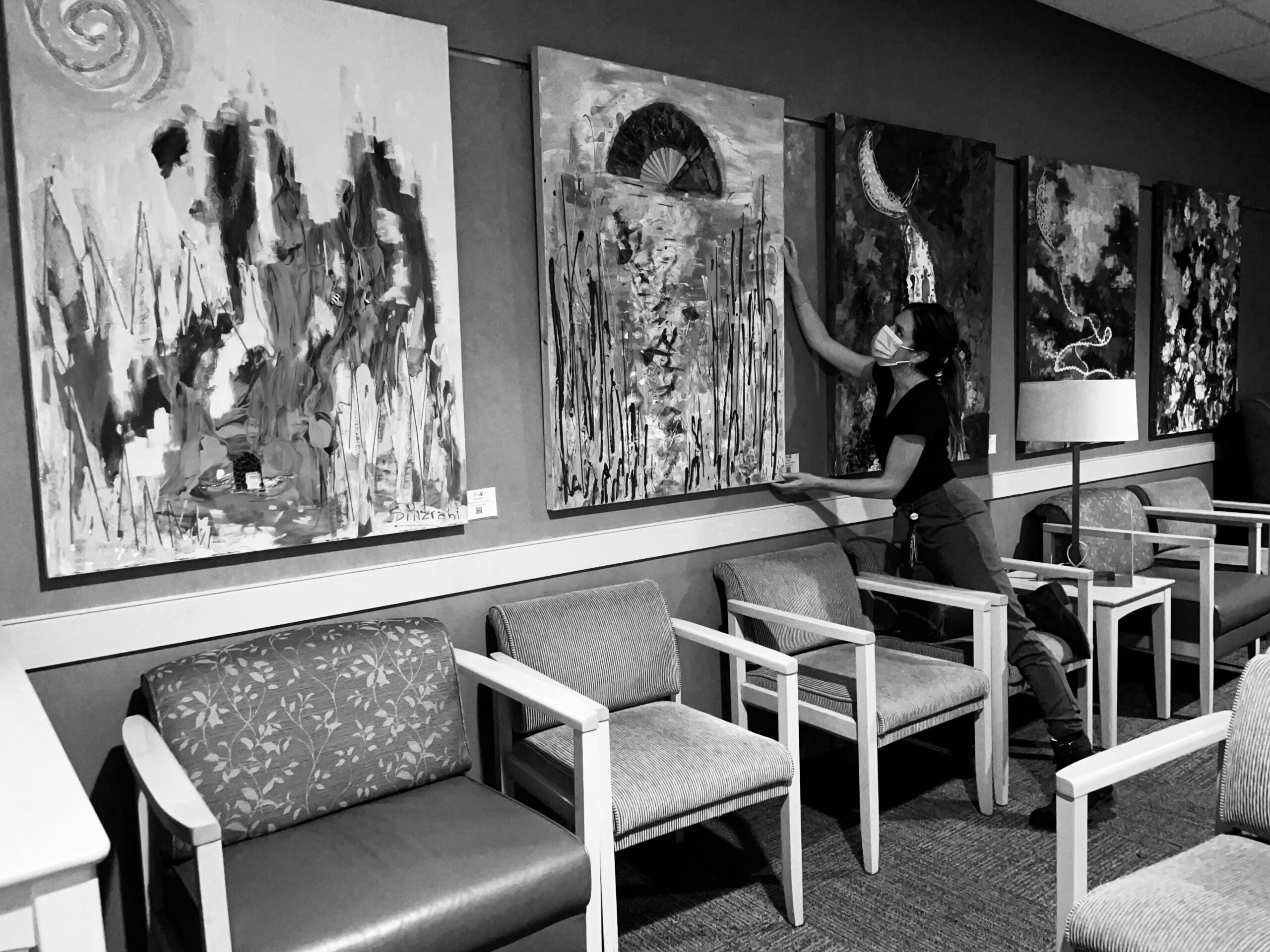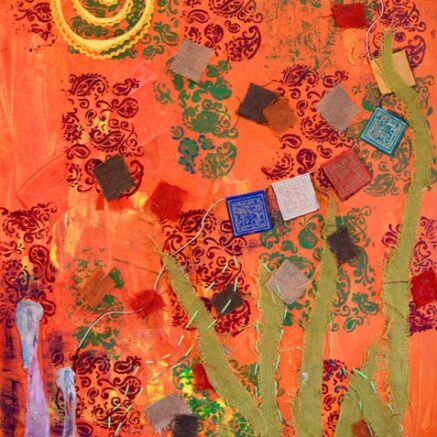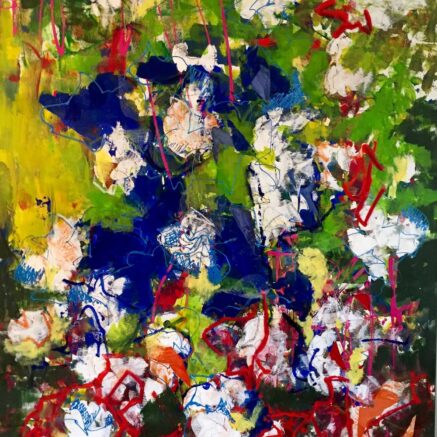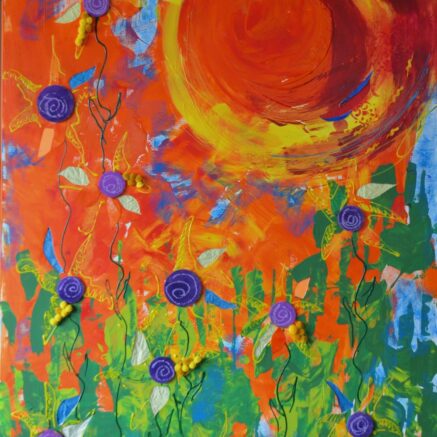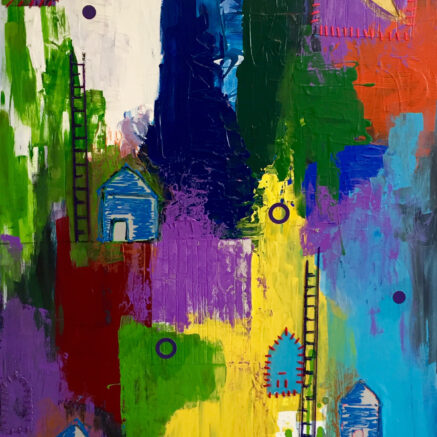Sefarad
In the artwork “Sefarad” Silvina uses a collage of paintings and hidden objects using photographic sources from maps, music sheets, and textiles. She included stitching, ribbon, and paper folded origami figures. To create this work the artist cuts the canvas in the shape of people’s figures, and then puts different papers on the back. This piece is a body of interconnected works that are rooted in memory and explore themes of personal transformation. The legend is from in the last decades of the 15 century. Here the people from Spain, especially the Jews, were persecuted from their countries by the Roman empire. Silvina is highlighting the inherent subjectivity of the art and the range of responses this picture can evoke. The effect she uses transforms subjects into warm human figures in bright but abstract forms. Its incredible how she transforms the painting into a series of openings that pull you into other worlds. As a Hispanic, they inspire a feeling of recognition. The artist shares her story, which can be related to some of our stories.
Hear from the artist herself:
En la obra “Sefarad” Silvina utiliza un collage de pinturas y objetos ocultos utilizando fuentes fotográficas de mapas, partituras y textiles. Incluyó costuras, cintas y figuras de origami plegadas en papel. Para crear esta obra, el artista recorta el lienzo en forma de figuras de personas y luego coloca diferentes papeles en la parte posterior. Esta pieza es un conjunto de obras interconectadas que tienen sus raíces en la memoria y exploran temas de transformación personal. La leyenda es de las últimas décadas del siglo XV. Aquí la gente de España, especialmente los judíos, fueron perseguidos de sus países por el imperio romano. Silvina destaca la subjetividad inherente del arte y la variedad de respuestas que puede evocar esta imagen. El efecto que utiliza transforma a los sujetos en cálidas figuras humanas en formas brillantes pero abstractas. Es increíble cómo transforma la pintura en una serie de aperturas que te llevan a otros mundos. Como hispanos, inspiran un sentimiento de reconocimiento. La artista comparte su historia, que puede estar relacionada con algunas de nuestras historias.
Escuchar de la propia artista:
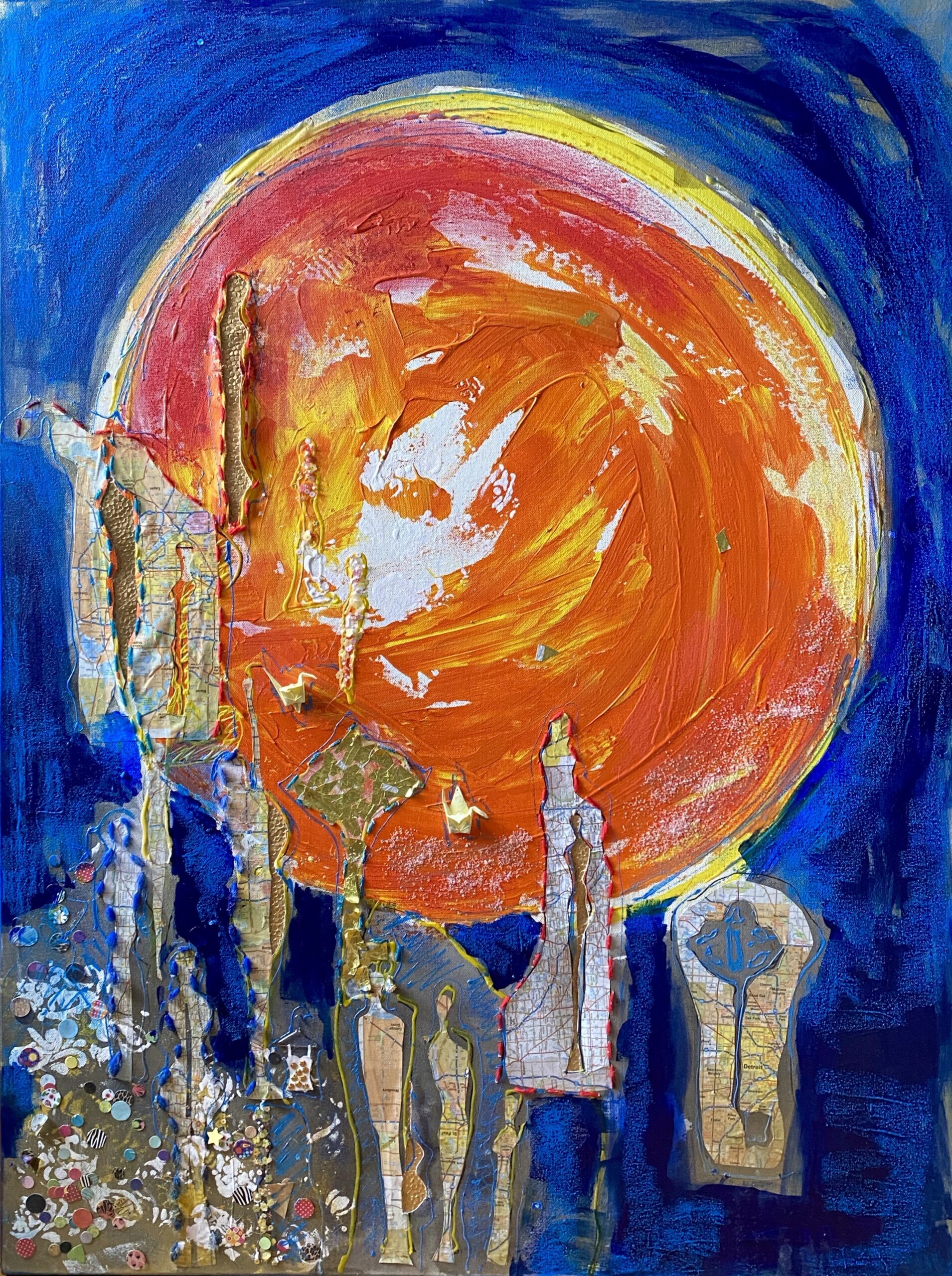
Silvina Mizrahi, Sefarad, 2019. Mixed media on canvas, 30"x40" ©Silvina Mizrahi. All rights reserved.
This exhibit is an opportunity to acknowledge immigration in the United States. The foreign-born population residing in the U.S. reached a record 44 million, or 13% of the U.S. population, in 2021. This immigrant population has more than quadrupled when the 1965 Immigration and Naturalization Act took effect. Though growth has begun to slow in recent years, the number of immigrants living in the United States is projected to double by 2065.
Esta exhibición es una oportunidad para reconocer la inmigración en los Estados Unidos. La población nacida en el extranjero que reside en los EE. UU. alcanzó un récord de 44 millones, o el 13 % de la población de los EE. UU., en 2021. Esta población inmigrante se ha más que cuadruplicado cuando entró en vigencia la Ley de Inmigración y Naturalización de 1965. Aunque el crecimiento ha comenzado a desacelerarse en los últimos años, se prevé que la cantidad de inmigrantes que viven en los Estados Unidos se duplique para 2065.
